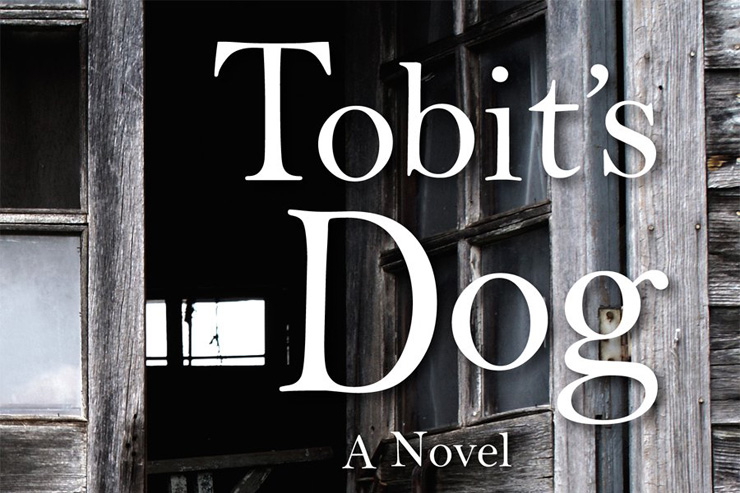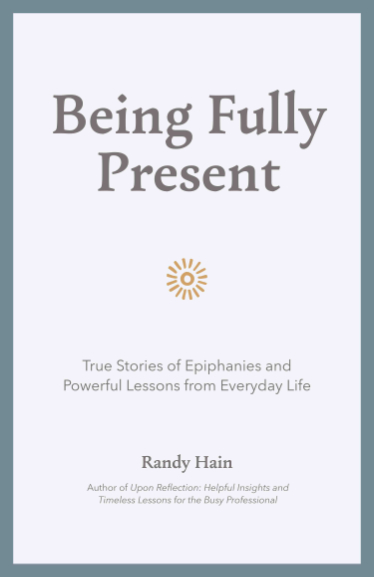
Our Lady of Good Counsel (original fresco from the church at Genazzano c. 1356; detail – click for full image)
Before we moved to our current home, when people would find out I lived in an old farmhouse, they generally had one of two reactions. They either thought I was lucky or they commiserated. For some reason, the people who thought I was lucky—living in a house that could have been in Anne of Green Gables or Black Beauty, electricity added of course—seem to outnumber those who commiserated.
Maybe old farmhouses just aren’t that common.
Or maybe they have no idea what they’re envying.
“It’s so quaint,” they would exclaim, after I conducted the requested tour.
“Oh, the possibilities!” they would gush, when I hinted that the draftiness never quite went away, even with insulation and drywall.
“It must give you such insight,” one wise commenter once said, and to that, I conceded.
Living in an old farmhouse did give me insight.
Our steep and narrow stairs, built at least an inch or two taller than their modern equivalents, gave me a workout and gave my children the ability to climb up nearly anything by the time they were tall enough to walk. If my kids could master those stairs, a chair in the kitchen was nothing. Those stairs reminded me to be careful and to watch what I was doing—I fell down those stairs carrying an eighteen-month-old child and broke my arm (the child, by the grace of God, was unharmed).
In that old farmhouse, we were aware of weather in a way we haven’t been since we moved to a newer house. When there were tornado warnings and heavy thunderstorms, we could cozy down, secure in the knowledge that, well, our house made it one hundred-plus years, and this storm probably wouldn’t be its undoing.
In that old house, I was surrounded by living beings. We battled termites, though they weren’t as interested in me as they were in the huge wooden trees that formed the underpinning of the house. Unlike newer houses, built with beams, our house had long logs of trees underneath.
There were wasps and ladybugs who visited seasonally, seeking comfort from the cold outside, finding entrance through the cracks and crevices that a newer house—or a remodeled house, I suppose—just wouldn’t have. There were a variety of beetles and spiders who hid in dark places and surprised me with their scurrying; I surprised them back with my screams and attacks on their lives.
When that farmhouse was built, the countryside around us looked much the same as it does now, though there was less noise and less light because of the fewer houses. They built the bricks on-site, I’m told, and the barns were for more than just a convenient place to stick a couple of 4H show calves. I used to imagine the small feet who walked the floors all those years ago and the exhausted mama who fell into bed at the end of a day harder than any of mine.
Living in an old house was a constant reminder of the people who came before, of the history that underlies our present time. My house was a testament to tougher times and to a different way of life. It started as a four-room, two-story house: two rooms downstairs, two rooms upstairs. It had had two expansions by the time I lived in it, but it still sported fewer rooms than most standard new builds of today.
It often made me wonder why I thought I need MORE; I had everything I NEED and though I think I need more—another room, another cupboard, another contraption to make my life easier—I used to wonder if I could survive in the lifestyle my house was built to accommodate.
How would I do with a weekly bath? Could I survive without the backup of a furnace when I forgot or neglected the fire in our wood stove? (A better question might be: would I forget it?) Without the comfort of electricity, when would I do all that reading I do in the evenings?
I think of our old farmhouse when I think about Our Lady of Good Counsel and the story that accompanies the image that miraculously appeared in 1467 in a little church in a small town in Italy.
It was an old church, rundown and needing many repairs. It probably wasn’t much to look at, and it probably took eyes of love and devotion to see the possibilities within it.
Almost thirteen years ago, when I married my husband and moved into that old house, I couldn’t imagine the state it was in twenty-seven years ago, when it was uninhabitable but still became the place my husband’s family had to live. I thought it was pretty rough when I moved in: no insulation, no heat in the upstairs, windows that seemed to let as much air in when they were closed as they did when they were open, cracks and peeling plaster on all the walls.
I thought the best answer was to tear the old house down, and that must have been what the parishioners at Our Lady of Good Counsel in Genazzano, Italy, thought too. One woman, though, the widow Petruccia de Geneo, saw the possibilities.
She felt called to pour all of her money into the restoration and repair of the chapel, though it wasn’t enough and the others in the area mocked her. The church, with its half-finished repairs, was dubbed “Petruccia’s Folly,” and I can just hear the whispers and see the rolled eyes whenever they caught sight of her.
Petruccia, in her devotion, didn’t give up, and she was praying in the church on April 25, 1467, the feast of St. Mark and a day of high festivity, as she often did. At 4 p.m., a cloud descended upon the town until it blocked the destroyed wall of the sanctuary. All of the revelers who had been in the town square had heard strange, beautiful music as the cloud appeared in the clear sky, and they had followed its descent. Before their eyes, the cloud parted to reveal a painting of Mary holding the Christ Child.
The image was amazing, a fresco on a thin layer of plaster or porcelain not much thicker than paper, measuring 15.5 inches by 17.5 inches. It was suspended in the air close to the wall of the chapel, resting only on a thin base, and has remained there since, for over five hundred years. It is not mounted in the back; you can take a string and go completely around it.
The image has a history beyond its sudden appearance in Genazzano, however. In Albania, Our Lady of Shkodra (Good Counsel) had been, and remains, a favorite source of comfort for dark times. One of the many churches dedicated to her held a fresco well-known for its beauty, one that inspired devotion in many of the Albanian people.
When the Ottoman Turks were invading in the fifteenth century, two men were praying in that chapel of Our Lady of Shkodra when, suddenly, the painting began to move away from the wall in a cloud. They followed it all the way to Rome, where it disappeared. When they heard about the miraculous appearance in Genazzano, they testified that it was, in fact, the same image, and to this day, Albanians will call that image “their” Lady of Good Counsel.
It’s an image that moves my heart when I look at the copies of it in books and online.
Mary is holding Jesus with their cheeks touching. I think of how many times I’ve rocked my little ones to sleep or cuddled them, with my cheek touching the soft skin of their face, smelling their sweet babyness.
Jesus’ right arm is around His mother, and His left hand rests on the neckline of her dress. Some interpret this as a symbol of the intimacy of nursing, and that makes me smile. Many of my favorite mothering memories involve nursing my babies, holding them close and bonding in the darkness of night, hearing the creaks of my house around me and the contented baby noises in my arms. What joy must Mary have felt sharing those moments with her Baby—and how must she have cherished those sweet memories later, when her Son left her for His public ministry?
Mary is half-turned to her Child and half toward the faithful, indicating her double interest, her ongoing concern with all of us, her children. When you look at her from an angle, her face seems almost sad, but from the front, it’s more of a smile. Her cheeks seem to change from red to pink and the color of the portrait, as reported by Church authorities and centuries of witnesses, changes in various tones throughout the different periods of the year, though it’s protected by glass (which doesn’t touch it) and from the humidity of the environment.
The mother and Child’s expressions have been reported to change. I wonder, when I hear this, if they smile at the touch of their cheeks, sharing a secret we can only hope to understand someday, when we meet them in Heaven. I wonder if they mourn the travesties of the modern world, the devastation they’ve seen in their five hundred-plus years.
We’re surrounded by miracles in our everyday life, by things that are unexplainable. How is it that a house built one hundred-plus years ago by men who just needed a place to settle is still standing, despite weather and corrosion and one woman’s aversion for its needed repairs? How is it that a fragile painting arrived in a dilapidated church in the middle of nowhere and has remained, defying gravity, for over five hundred years?
In the end, it’s not my old farmhouse—or that miraculous image—that’s important. My house is just a structure, one that might seem appealing to some and old-fashioned to others.
The image of Our Lady of Good Counsel is, really, a road sign, showing us a glimpse of the love that is simply waiting for us to say yes. What made my house important was what was inside, the family that breathes life into it and makes it a destination for memories.
It’s a great grace to see past the peeling plaster to the possibility beyond, one that I think the widow Petruccia would explain with a smile. Isn’t that just what Jesus does with each of us, inviting us to embrace His mother as He did, to make our heart a home by inviting Love into it?















